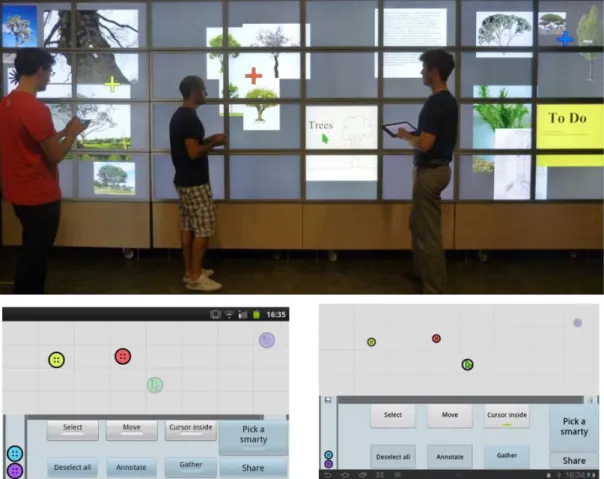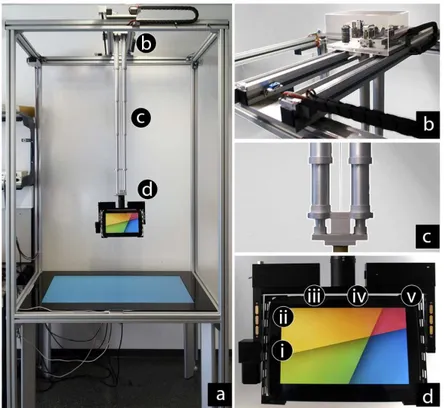Conception et évaluation de techniques d'interaction pour l'exploration de données complexes dans de larges espaces d'affichage
Texte intégral
Figure


![Figure 2.17: Different cross-display object movement methods: a) Tray, b) Transfer Mode, and c) Device Touch [102]](https://thumb-eu.123doks.com/thumbv2/123doknet/2226363.15530/48.892.164.784.824.1000/figure-different-display-object-movement-methods-transfer-device.webp)

Documents relatifs
We took interest in interaction with large datasets on large displays. We specifically focused on simultaneous interaction with multiple regions of interest of the
(D) However, when options are presented simultaneously during choice trials, the cross-censorship described in (B) leads to a shortening of latencies during choice compared to
Among the candidate CF parameters identified for plants of ecotype Col-0 using global values, qP measured during the light-adaptation (qP (25) , qP (38) , qP (62) and qP (74) ) and Q
Doit contenir un minimum de 1,5 % en volume de distillat(s) de grains (« moutwijn »), exprimé dans la teneur totale en alcool pur dans le produit fini, obtenu(s) par distillation
This data structure is two orders of magnitude smaller than the input, making it possible to explore interactively an entire family of features along with aggre- gate attributes,
Keywords: Large Image Collection, Ever-growing Image Collection, Incremental Struc- turing, Visualisation, Interactive Exploration, Relative Neighbourhood Graph (RNG), Clustering,
AIDEme is a scalable interactive data exploration system for efficiently learning a user interest pattern over a large
The rudiment of our system is the combination of data binning- based data clustering and density-based confluent drawing, which supports the real-time interactions for
![Figure 2.21: The HuddleLamp detects and tracks mobile devices and users’ hands for ad hoc multi-device collaboration on desks [146]](https://thumb-eu.123doks.com/thumbv2/123doknet/2226363.15530/51.892.158.787.137.310/figure-huddlelamp-detects-tracks-mobile-devices-device-collaboration.webp)
![Figure 2.26: The user is wearing the HoloLens and using Kinect gestures to change the rotation of the model [198]](https://thumb-eu.123doks.com/thumbv2/123doknet/2226363.15530/58.892.157.789.211.635/figure-wearing-hololens-using-kinect-gestures-change-rotation.webp)
![Figure 2.27: Performing a pinching gesture pans the night sky imagery in World Wide Telescope [21]](https://thumb-eu.123doks.com/thumbv2/123doknet/2226363.15530/59.892.158.788.293.712/figure-performing-pinching-gesture-night-imagery-world-telescope.webp)
![Figure 2.29: A user manipulates the WIM using the physical clipboard and button-ball props [177]](https://thumb-eu.123doks.com/thumbv2/123doknet/2226363.15530/61.892.163.786.140.627/figure-user-manipulates-using-physical-clipboard-button-props.webp)
![Figure 2.32: TickTockRay enables freehand pointing in mobile VR using an off-the-shelf smartwatch [107]](https://thumb-eu.123doks.com/thumbv2/123doknet/2226363.15530/64.892.156.785.593.792/figure-ticktockray-enables-freehand-pointing-mobile-using-smartwatch.webp)
![Figure 2.34: Proposed hand-To-Face input for navigation by [167] includes: a) Panning, b) Pinch zooming, c) Cyclo zooming, d) Rotation zooming](https://thumb-eu.123doks.com/thumbv2/123doknet/2226363.15530/66.892.218.698.499.836/figure-proposed-navigation-includes-panning-zooming-rotation-zooming.webp)